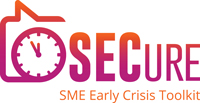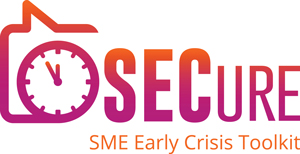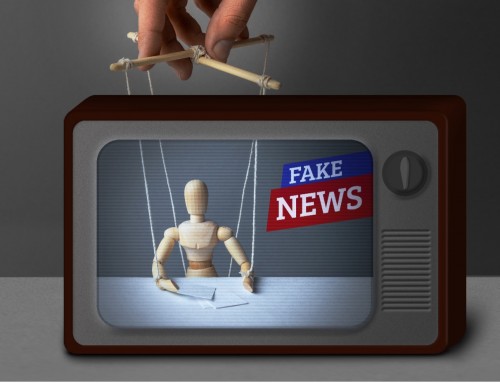Even if business is going well for you at the moment, you should take crisis prevention measures now. Because one thing is almost certain: The next crisis is bound to come. And once it arrives, it is usually too late to come out of the situation unscathed. So make the most of the time, because now you can usually divert the necessary resources for this purpose.
- Lay the foundation early
You will ask yourself why you should change something now of all times. And of course you want to know what you should change at all – since everything is going so well at the moment!
One thing is certain: it is primarily failures or mistakes in the area of performance management that lead companies into a crisis. The following areas set the course for the long-term positioning and success or failure of your company:
- Product development,
- Compilation of a long-term competitive product portfolio,
- Development of new potentials (markets, customers, other business partners),
- competition and trend analysis,
- long-term financing,
- alignment of internal processes (logistics, service, accessibility) with the requirements of the market.
Payment problems and possible insolvency are merely a consequence of possible deficits in these areas. If the “homework” is done regularly in these areas, it is not possible to completely prevent a drop in earnings during a crisis, but it can be significantly reduced.
In order to remain successful on the market in the future, you must decide today which products you want to use to address which customers and markets. You have to take care of the development of new or the improvement of existing products and services. And the organization of cooperation with important business partners, such as suppliers, cooperation partners or banks, often cannot be implemented overnight. In addition, processes must be regularly reviewed and, if necessary, adapted to the ever faster changing circumstances. If long-term development is neglected, the next downturn will most likely bring a drop in profits and payment problems.
Practical tip: Consider how long a business cycle lasts on average in your industry and how susceptible it is. If you don’t know or can’t estimate this, you can find out this information from the industry association, for example.
- proposed measures and time or duration of effect
The following list contains several suggested measures with which you can develop your company in the long and short term. The measures are assigned to different crisis phases. Check which suggestions make sense and when they can be implemented.
Strategy crisis
- review of the business model: Can the current products, in today’s markets, with the existing customers and partners still be operated successfully in 3 to 5 years? Are there differentiating features to the competition? Is there a corporate strategy?impact / entry duration: in case of necessary changes approx. 2 to 4 years
- product development and improvementEffect / entry duration: depending on the industry, at least 1 to 3 years
- elimination of personnel bottlenecks (keyword: shortage of skilled workers, personnel retention)
Impact / entry duration: 3 to 5 years
- opening up new markets at home and abroad (rule of thumb: abroad, you have to reckon with about twice the time as at home)
Duration of impact / entry: depending on industry / market, like product development at least approx. 1 to 2 years
- acquisition of new customers (in the sense of new target groups, no regular acquisition)
Impact / entry duration: approx. 1 to 3 years
- revision and, if necessary, realignment of product portfolio (incl. adjustment of product range depth and breadth)
Impact / entry duration: approx. 1 to 3 years
Revenue Crisis:
- customer care (to motivate existing/old customers to buy again).
Impact / entry duration: approx. 3 to 6 months - customer acquisition
Impact / entry duration: approx. 3 to 6 months - improvement of processes, e.g. production, logistics, service
Impact / entry duration: individual, depending on necessity/complexity, from a few months to over 1 year - change in the value chain (e.g. outsourcing, cooperation)
Impact / entry duration: depending on complexity, at least 6 to 12 months - developing new advertising concepts
Impact / entry duration: approx. 3 to 6 months - establish new sales channels (incl. finding and integrating new sales partners, if necessary)
Impact / entry duration: at least approx. 6 to 12 months, until customers use channels regularly - release tied-up capital, e.g. by improving working capital
Impact / entry duration: at least approx. 3 to 6 months, usually longer in the case of inventories - improve financing, e.g. find new bank or additional capital providers (MBG, partners), factoring, leasing
Impact / entry duration: at least approx. 6 months
Liquidity crisis
- send all invoices completely and correctly
Duration of effect / occurrence: within one week - consistently collect receivables, e.g. reminders, debt collection
Duration of effect / occurrence: at least approx. 2 to 6 weeks - supply own funds via the holders
Duration of effect / occurrence: at least approx. 4 to 6 weeks - increase credit limit with banks (often difficult in crises)
Duration of impact / occurrence: at least approx. 4 to 8 weeks - stop or limit expenditures or investments
Duration of effect / occurrence: usually within 1 week - sell assets that are not needed, especially current assets (often only a small inflow of funds)
Duration of effect / occurrence: 4 to 8 weeks
- advantages of regular crisis prevention
If the analysis shows that you have done many things right so far and that there is therefore little or no need for action, you should nevertheless examine how the strengths can be built on and any minor weaknesses eliminated. Even in phases in which you are doing well economically, you can benefit from regular crisis prevention:
- Time and reaction margins can be fully exploited.
- Entrepreneurial freedom and scope for action are maintained.
- Third parties, such as the bank, are prevented from interfering in day-to-day business.
- Creditworthiness is improved, which brings countable advantages, especially in credit negotiations and negotiations with suppliers.
- New business potential is identified.
- Business becomes more stable in the long term with less susceptibility to fluctuations and crises.
All information and details in our articles and information have been compiled to the best of our knowledge. However, they are provided without liability. This information cannot replace individual advice in specific cases.
Link to the german version: https://thevisionworks.de/krisenpraevention





